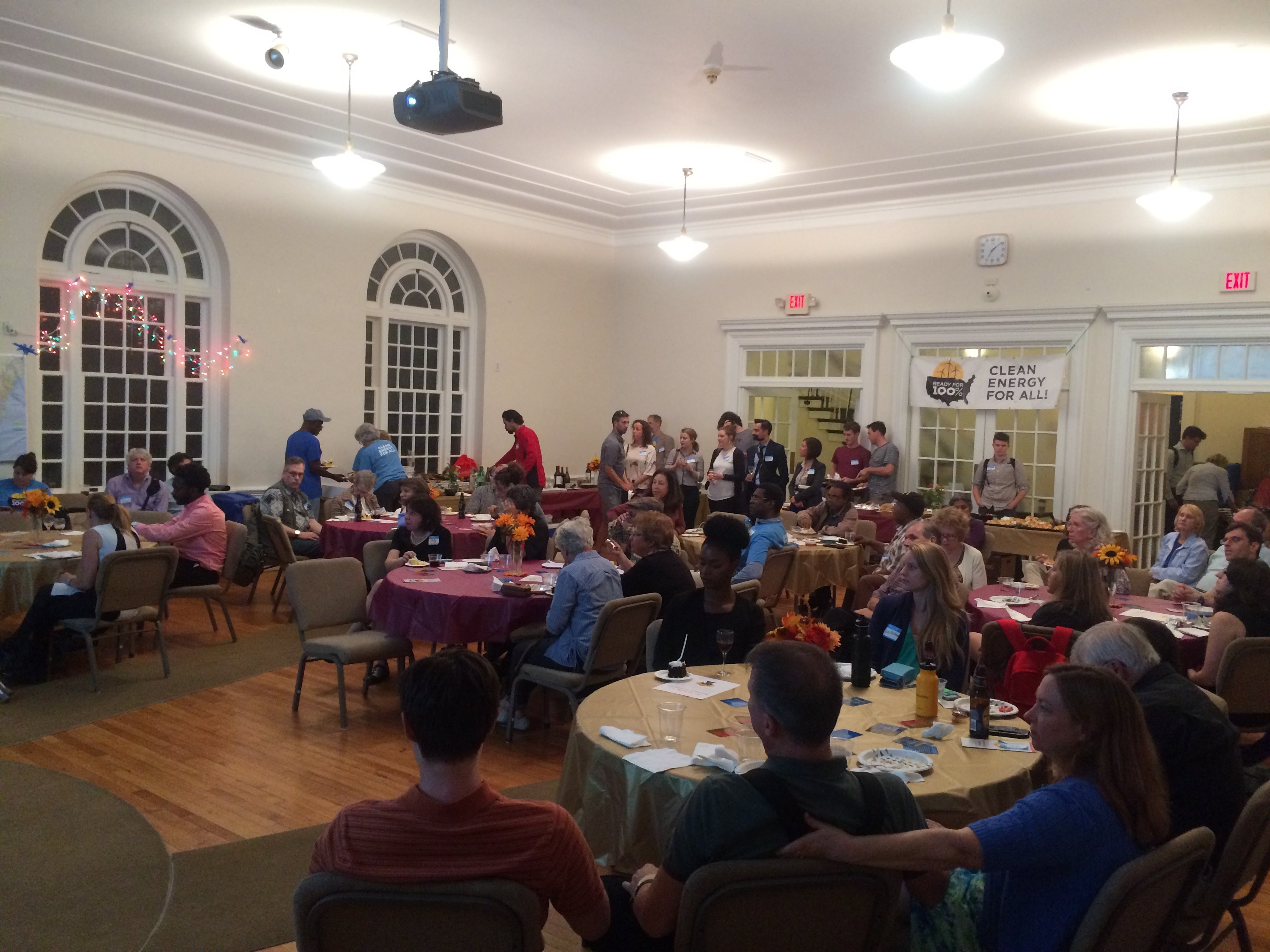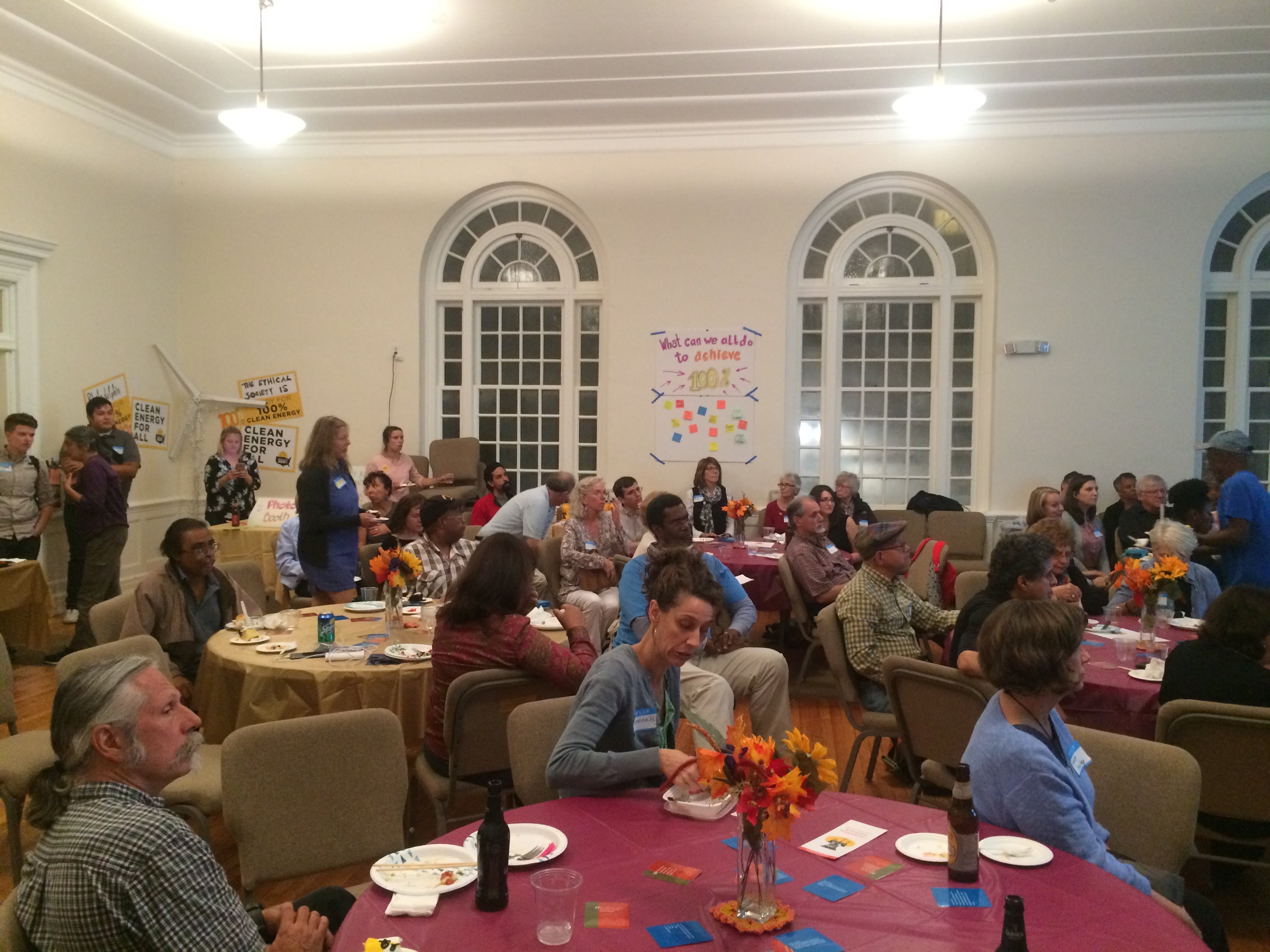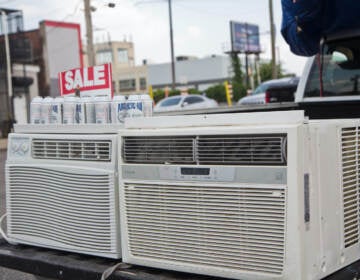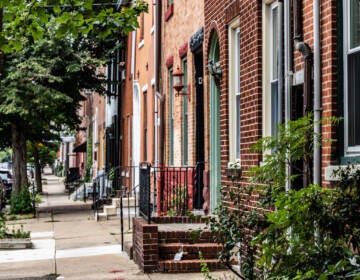Environmentalists cheer Philadelphia’s plan for 100 percent clean energy by 2030
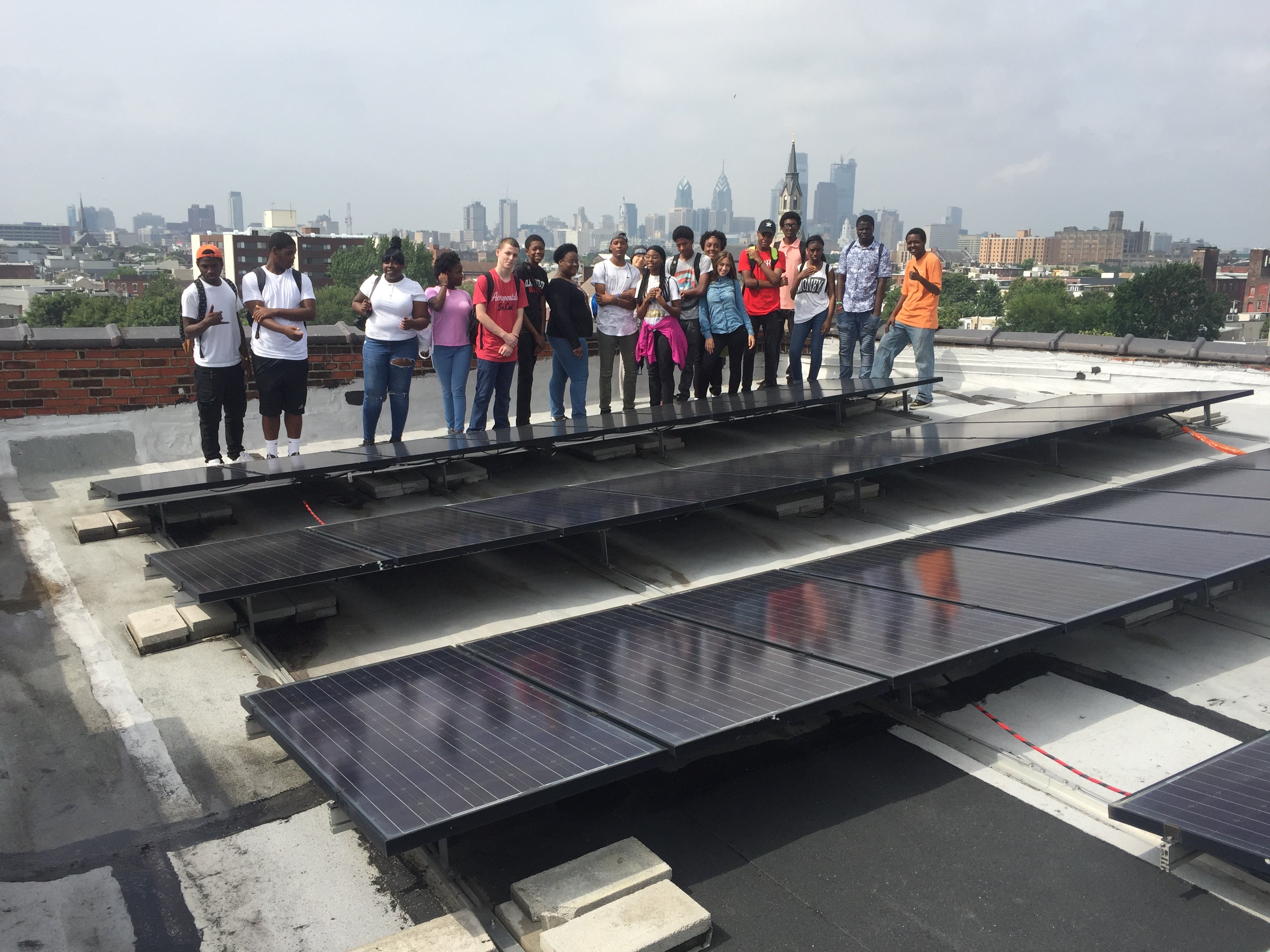
Energy experts and environmental advocates described the city’s new energy master plan for fulfilling Mayor Jim Kenney’s pledge to reduce city-wide greenhouse gas emissions by 80 percent by 2050 as smart, ambitious, appropriately aspirational, and, more importantly, doable.
The plan establishes four intermediate goals for 2030: Reduce the energy usage of city buildings and streetlights 20 percent; reduce city greenhouse gas emissions 50 percent; switch to 100 percent renewable electricity, and; maintain or reduce the cost of energy.
While those may seem like big goals, the plan only addresses 40 percent of city government’s total energy usage, because it excludes the Philadelphia Water Department and the Philadelphia International Airport.
Still, environmental advocates celebrated the plan at a party last Thursday night held at the Philadelphia Ethical Society for the launch ofthe “Ready for 100” campaign.
“It’s not citywide and it’s not 100 percent,” said Meenal Raval, a member of 350 Philadelphia and Northwest Philly Solar Co-op. “So, it’s a good first step. But all of these people are going to be pushing for the mayor to get to the end goal.”
Raval noted that the city’s new plan only covers renewable electricity, excluding fuel types like natural gas for heating and automobiles. In June, Mayor Kenney signed a pledge supporting a citywide transition to 100 percent clean, renewable energy, but there was no target date for that goal. The Sierra Club, a national environmental organization, is pushing for 2050.
Mark Alan Hughes, director of University of Pennsylvania’s Kleinman Center for Energy Policy, said the goals are “appropriately aspirational,” connected other city’s goals, and “very smart.”
“It’s very good that they start with energy efficiency goals,” Hughes said.
One of the plan’s strategies aims to lower the energy used by city buildings and street lighting — the city spends $35 to $45 million annually simply keeping the lights on, and $100 million a year if one includes the water department and the airport — by implementing basic energy efficiency measures such as replacing regular bulbs with LED lighting, installing occupancy sensors (which turn off lights if no one is in the room), improving building insulation, and replacing old heating systems.
Electricity makes up 52 percent of the energy used by city government, and 79 percent of the cost. Excluding the water department and the Philadelphia International, the city’s largest department energy consumers are Correctional Facilities (19%), Streets (14%) and Parks and Recreation (12%).
To make about 600 city-owned buildings more energy efficient, the city is looking to sign large-scale energy performance contracts, like the one completed in 2015 to upgrade City Hall, the Municipal Services Building, One Parkway Building, and the Criminal Justice Center, which reduced city carbon emissions by 7,800 Metric Tons and energy costs by more than $1.4 million a year. The long-term contract model uses energy savings to pay for the the upfront retrofit costs.
The city is also developing a large-scale energy performance project at the Philadelphia Art Museum, the city’s single most energy-hungry building, using about $3 million worth of energy a year. The plan aims to immediately reduce that amount by over 22 percent. After the museum, it will be city’s correctional facilities’ turn for upgrades, followed by fire and police stations next year.
According to Hughes, one of smartest aspects of the energy master plan is using the Philadelphia Energy Authority to engage in long-term, power-purchase agreements, something that has not been done before. Hughes said long-term contracts to purchase renewable energy enables the city to negotiate a good rate and get certainty into the future, because they lock in prices, ensuring they won’t go up.
Adam Agalloco, the city’s energy manager, said the city came to realize that renewable energy prices were competitive last November, after issuing a request for information on renewables. “The prices that we were getting [quoted] were really in the neighborhood of what we were already buying,” Agalloco said.
Last Wednesday, the city published a request for proposals for renewable energy projects to provide 20 to 40 percent of Philadelphia city government’s electricity.
“This could be budget neutral — potentially cost saving — and, either way, it’s going to be risk mitigating: You know exactly what that section of your energy cost is going to because you’ve purchased that for a long time,” Agalloco said.
Christine Knapp, director of the city’s Office of Sustainability, said the idea is to present other RFPs in the future, to increase the renewable energy portfolio and to explore ways of generating renewable energy in the city by, for example, installing rooftop solar in city-owned buildings.
“Having the goal of going to 100 percent in 13 years is very aspirational,” Hughes said. “But they have a way, and they can be held accountable.”
Today the city uses only 6 percent of renewable electricity, but Hughes said the city could maybe double or triple the amount of renewable energy they produce and buy the rest.
“That’s why this power purchase agreement is so important. They can do 100 percent,” Hughes said. “If there’s political will, there’s no technological challenge to reduce the energy use and improve the energy efficiency of the city’s buildings by 20 percent. That’s technically doable, feasible.”
Nonetheless, the emissions coming from city buildings and streetlights only account for around one percent of Philadelphia’s total carbon pollution — 2.5 percent with the water department and the airport — according to the energy master plan. To accomplish the city’s two other long-term goals — reducing citywide greenhouse gas emissions by 80 percent by 2050 and eventually transitioning Philadelphia to 100 percent clean energy — will present significantly greater challenge.
“What we really want is other large institutions, businesses, and residents to see that there’s value in this. We need massive clean energy investment to change the grid the way we need it to be change to reach our citywide goals,” Agalloco said.
During the next weeks, the city will release it’s citywide clean energy vision, which will require state and federal action. Knapp said there’s also a transportation plan coming and energy plans from the water department and the airport.
“We are leading by example,” Knapp said. “If we find a cost-competitive project, then there’s no reason to say it’s impossible. If we can, everyone can.”
For now, Philadelphia’s environmental groups — which have been critical with the city’s energy use priorities before — are happy. During last Thursday’s party, around 60 people applauded Knapp and representatives from other city agencies.
“I think the [master plan’s] goals are really moving a needle to getting into 100 percent. They are ambitious yet they’re achievable,” said Matt Walker, advocacy director with Clean Air Council. “The city has done a really good job in putting out a pretty solid power purchase agreement that includes diversity goals, good working conditions and an emphasis of proximity to Philadelphia. It’s a great step in the right direction.”
But even as advocates celebrated and ate slice of big cake bearing a the ‘Ready for 100’ logo, Philadelphia remains behind many peer cities on renewable commitments. It’s still not on the list of cities committed to 100 percent renewable energy.
“We need to see more of that [good steps] from the city and more actors in the city stepping up and taking the city’s leadership in this issue,” Walker said.
WHYY is your source for fact-based, in-depth journalism and information. As a nonprofit organization, we rely on financial support from readers like you. Please give today.




